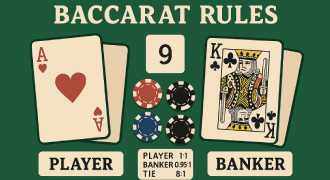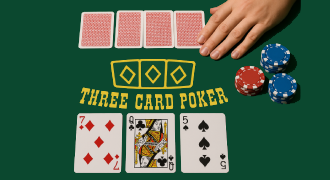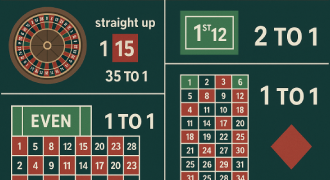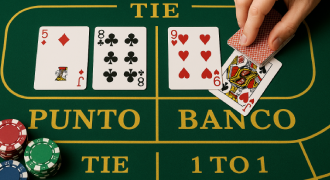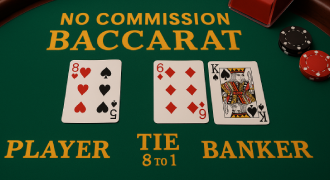Types of Poker Game: Which One Is Right for You?
Finding your ideal format starts with honest self-assessment: patience level, appetite for variance, and the kind of problem-solving you enjoy most. As you explore the landscape, you will see how betting structures, card distribution, and table dynamics shape the feel of each variant. Many learners begin by surveying the types of poker available in card rooms and apps, then narrowing to formats that match their goals. Others frame the journey by asking about the different types of poker and creating a short list to test over several sessions.
Types of Poker Games – Choosing the Right One
|
🃏 Game Type |
📖 Characteristics |
💡 Best For |
|
🎯 Texas Hold’em |
Community cards; 2 hole cards; widespread online & live |
Beginners & strategic grinders |
|
🍍 Pineapple |
Community cards; 3 hole cards, discard 1 |
Players who enjoy extra pre-flop options |
|
🔢 Short Deck (6+) |
36-card deck; altered hand rankings |
High-variance enthusiasts & televised formats |
|
🃏 Omaha Hi |
4 hole cards; must use exactly 2 + 3 community cards |
Advanced players seeking deep pots & combo draws |
|
⚖️ Omaha Hi-Lo (8 or Better) |
Pot splits between high & qualifying low |
Players who like split-pot strategy and multiple objectives |
|
🏆 Stud Variants |
No community cards; partial hands revealed |
Card-tracking and probability-focused players |
|
♠️♥️♦️♣️ Mixed/Hybrid Games |
Combines multiple structures or wild cards |
Experienced players seeking variety and tactical depth |
Overview of Popular Poker Variants
You will encounter ring games, tournaments, and mixed rotations where formats change every orbit. In most lobbies, a handful of staples dominate, with Hold’em, Omaha, and draw games anchoring the menu. Beginners often look up the most popular types of poker to prioritize the versions with the biggest player pools and the best learning resources. Many also compare table feel across the types of poker to find the right blend of complexity and action.
Texas Hold’em
Each player receives two private cards and combines them with five community types of video poker cards to make the best five-card hand. Positional awareness and bet sizing discipline matter because single-pair hands can still win large pots. The game rewards steady decision-making backed by a grasp of equity, blockers, and board texture.
Omaha
Players get four private cards and must use exactly two, plus three from the board, to form the final hand. Equities run closer, draws are bigger, and multiway pots are common. In Pot-Limit Omaha types of poker, sizing is naturally tethered to the size of the pot, creating big but controlled confrontations.
Five-O Poker
This split-deck novelty creates five parallel five-card hands that battle in lanes, with players choosing where to place results. The strategy resembles a mash-up of stud and draw logic with a dashboard of micro-decisions.
Chinese Poker
Participants receive 13 cards and arrange them into three hands—front, middle, and back—following strict strength ordering. Fantasy Land bonuses and royalties add layers of scoring. Many introductions categorize it alongside types of poker card games that rely on construction skill more than betting tactics.
Follow the Queen
A stud-style home favorite where the next upturned queen toggles a fresh wild card. Variance can spike because wilds expand ranges and create dramatic rivers.
Chicago
This stud variant awards half the pot to the best high hand and half to the highest spade in the hole, concentrating play around hidden information and suit control.
Five-Card Draw
Players receive five cards, may replace any number after the first betting round, and then go to showdown. Reading replacement patterns is the heart of the game. Many roundups place draw within the broader family of poker types of games that emphasize pre- and post-draw deduction.
2-7 Triple Draw
A lowball format where the goal is the lowest five-card hand at types of poker, with three drawing rounds. Straights and flushes count against you, and aces are high, making 7-5-4-3-2 the nuts. The discipline is in folding marginal draws early and preserving bets for smooth eights and sevens.
Other Notable Poker Variants
Beyond headliners, casual and casino floors rotate in hybrids, wild-card twists, and stud formats that reward specialized knowledge. Many lists survey types of casino poker games that incorporate house-banked elements and simplified decisions. Enthusiasts enjoy sampling all types of poker to keep study fresh and to broaden tactical awareness.
Below is a table with poker variants that are often found in casinos or home games. Use it as a reference guide to quickly understand the features of each format and adapt your strategy to different types of games.
|
🃏 Variant |
📖 Description / Key Rules |
💡 Strategy Tip |
|
🍍 Pineapple |
Deals 3 hole cards; discard 1 at set times depending on sub-variant |
Extra private card changes pre-flop ranges; adjust post-flop planning |
|
🔢 Short Deck (6+) Poker |
36-card deck (2–5 removed); altered hand rankings; flushes may rank differently |
Adjust hand selection; nuts change value; beware overestimating lower straights |
|
🃏 Stud Variants |
No community cards; partial hands revealed over multiple streets |
Track visible cards carefully and calculate probabilities |
|
♠️♥️♦️♣️ Mixed / Hybrid Games |
Combines different structures or wild-card twists |
Flexibility and knowledge of multiple formats reward specialized play |
Discussions of emerging formats often begin with the question what types of poker are there, and this variant usually makes the list thanks to televised events.
Understanding Different Betting Formats in Poker
No-limit allows betting any amount up to your full stack, pot-limit ties the maximum raise to pot size, and fixed-limit uses preset increments per street. Antes accelerate action and force wider defense ranges. Players researching rule sets often phrase the topic as what are the types of poker when they mean betting systems as much as card distribution. Curiosity also leads to the practical question how many types of poker are there, which depends on whether you count minor house rules or only mainstream formats.
Most Popular Types of Poker Explained
Hold’em and Omaha dominate traffic because their structures support deep strategy, televised coverage, and durable ecosystems for training. Draw and stud formats retain fan bases that enjoy deduction and memory challenges. Casinos add proprietary twists and side bets to widen appeal to casual visitors. For single-player terminals, guides compare types of video poker by paytable and optimal play. In many popular overviews, authors also frame the conversation with what are the different types of poker to orient new players quickly.
|
🎰 Provider |
🎯 Paylines |
🔖 Paying Symbols |
🎁 Bonus Features |
🎲 RTP |
💵 Min Bet |
|
🧪 VariantLab Studio |
25 |
A, K, Q, J, 10; 👑 Wild Crown; 🃏 Scatter Card |
🎡 Free Spins, ✨ Multiplier Ladder, 🃏 Sticky Wilds |
96.5% |
$0.20 |
RTP explanation: The RTP is 96.5%, which represents a long-term theoretical return calculated across millions of spins, implying an average of $96.50 paid back for each $100 wagered. Short-term sessions will deviate due to variance, so prudent bankroll planning is vital. The minimum bet is $0.20, which suits cautious trials before scaling stake size. Volatility skews medium-high, delivering quieter base periods and occasional bonus spikes; prepare stop-loss and stop-win targets to keep sessions controlled and enjoyable types of poker games.
How to Choose the Best Poker Variant for You
First, identify whether you prefer deduction, geometry, or storytelling at the table, then match that preference to specific formats. If you favor sharp reads and initiative, Hold’em fits. If you love big combo draws and multiway tactics, Omaha should top your short list. As you test, keep notes on pace, pressure points, and where your edge feels largest among the types of poker that you try.
It also helps to map learning resources to your schedule so you can practice daily. After a few weeks, you will know which ecosystems are welcoming, which player pools are soft, and which types of poker keep you engaged enough to study consistently.
FAQ
What is the best poker game for beginners?
Most players start with Hold’em because rules are simple, action is steady, and training materials are abundant. Early progress depends on position, patience, and right-sized pots rather than fancy plays.
Can I play poker for free?
Yes, many platforms offer play-money tables and freeroll tournaments that let you practice fundamentals without financial risk. Treat sessions seriously and review hands to build habits that carry into real stakes.
Where can I learn comprehensive poker strategy?
Study mixes articles, videos, and solver-driven drills into a weekly plan. Focus on pre-flop ranges, c-bet structures, and turn pressure, then expand to river play and exploitative adjustments.
Which variant is easiest to learn?
Five-Card Draw is straightforward, while Hold’em balances simplicity with deep strategy. Choose the one that motivates consistent study rather than the one that promises quick thrills.
Which games have the most action?
Omaha and wild-card home formats usually run hotter due to large draws and multiway pots. Fast structures with antes also push more chips into the middle.
Are rules consistent across all variants?
Core principles repeat, but each format has unique procedures, hand constructions, and betting cadence. Always confirm house rules before you sit so expectations match reality.
Difference between Stud and Draw poker?
Stud deals a mix of face-up and face-down cards over several streets without discards, while draw deals full hands first and then allows replacement after a betting round. Each demands distinct planning and memory skills.

